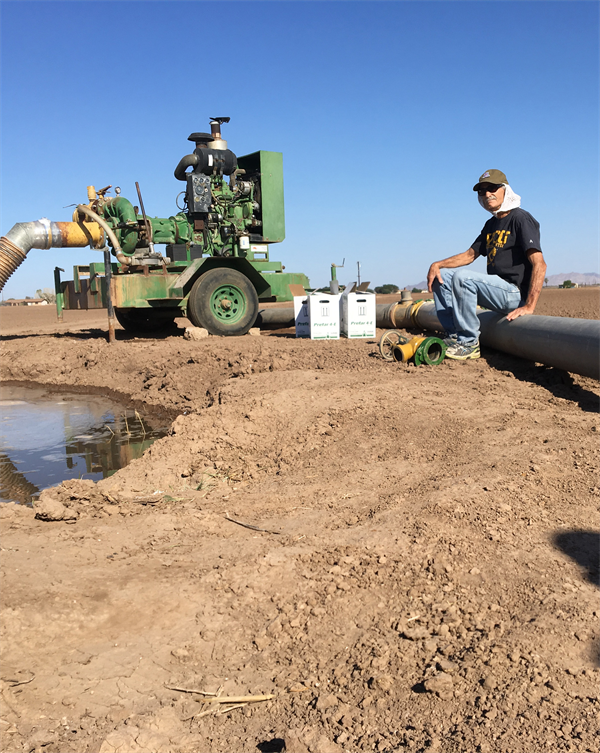Herbicide Chemigation Injecting products through irrigation systems is an old technique. It was first used with fertilizers but is now used with pesticides as well. The first herbicide that was chemigated was EPTC (Eptam) in the early 1960’s. Chemigation is generally simple, cost effective and can be done when the field is too wet for equipment operation. Off target drift is minimized and those herbicides that require incorporation into the soil are incorporated at the same time as application. Disadvantages are that sprinklers are designed to apply large volumes of water over several hours and days. It works well for water and fertilizer because any ununiformed is masked by the volume and time it takes to apply them. With herbicides we might be applying only a few ounces per acre and if they are applied in less than an hour or if it is windy ununiform applications can result. Probably the major disadvantage is that sprinkler pipe must be in the field. The pipe commonly has been removed when postemergence applications are made. Most of the common soil applied preemergence herbicides including Prowl,Treflan, Dacthal, Eptam and others can be chemigated. Some of the postemergence, foliar herbicides including Buctril/Maestro, Goaltender, Clethodim, Sencor, Diuron, Dual, Prometyrn and others are also registered for chemigation. This is surprising because you would expect them to be washed off with the water, but they work well and some work better when chemigated. Chemigations typically require lower rates so check the label for rates.






